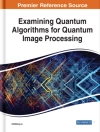Trustworthy Ubiquitous Computing covers aspects of trust in ubiquitous computing environments. The aspects of context, privacy, reliability, usability and user experience related to “emerged and exciting new computing paradigm of Ubiquitous Computing”, includes pervasive, grid, and peer-to-peer computing including sensor networks to provide secure computing and communication services at anytime and anywhere. Marc Weiser presented his vision of disappearing and ubiquitous computing more than 15 years ago. The big picture of the computer introduced into our environment was a big innovation and the starting point for various areas of research. In order to totally adopt the idea of ubiquitous computing several houses were build, equipped with technology and used as laboratory in order to find and test appliances that are useful and could be made available in our everyday life. Within the last years industry picked up the idea of integrating ubiquitous computing and already available products like remote controls for your house were developed and brought to the market. In spite of many applications and projects in the area of ubiquitous and pervasive computing the success is still far away. One of the main reasons is the lack of acceptance of and confidence in this technology. Although researchers and industry are working in all of these areas a forum to elaborate security, reliability and privacy issues, that resolve in trustworthy interfaces and computing environments for people interacting within these ubiquitous environments is important. The user experience factor of trust thus becomes a crucial issue for the success of a Ubi Comp application. The goal of this book is to provide a state the art of Trustworthy Ubiquitous Computing to address recent research results and to present and discuss the ideas, theories, technologies, systems, tools, applications and experiences on all theoretical and practical issues.
Зміст
The automatic Trust Management of self-adaptive Multi-Display Environments.- Malicious Pixels – Using QR Codes as Attack Vector.- A Virtual Performance Stage as a Space for Children to Create and Perform Stories.- Network Forensics: Detection and Mitigation of Botnet and Malicious Code via Darknet.- Trusted Log Management System.- Reasoning of Collaborative Human Behaviour in Security-Critical Work Practices: A Framework.- Mitigation of Wormhole Attack in Wireless Sensor Networks.- Protocol for Secure Access in Mobile Ad-hoc Network for Emergency Services.- A Lightweight Graph-Based Pattern Recognition Scheme in Mobile Ad Hoc Networks.- Security Framework for Mobile Banking.- Anonymous, Secure and Fair Micropayment System to Access Location-Based Services.- Privacy Preserving with A Purpose-based Privacy Data Graph.












